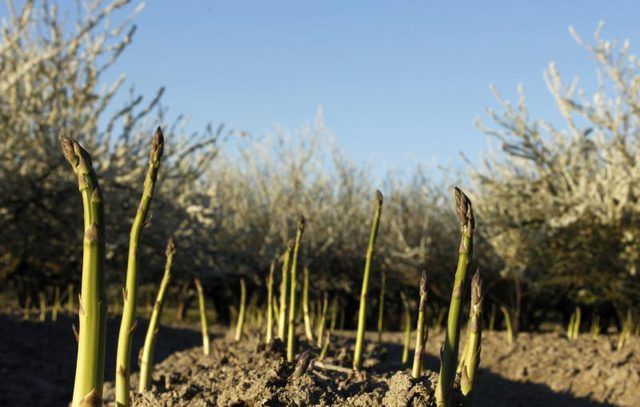Bulbs
Flower Basics
Flower Beds & Specialty Gardens
Flower Garden
Garden Furniture
Garden Gnomes
Garden Seeds
Garden Sheds
Garden Statues
Garden Tools & Supplies
Gardening Basics
Green & Organic
Groundcovers & Vines
Growing Annuals
Growing Basil
Growing Beans
Growing Berries
Growing Blueberries
Growing Cactus
Growing Corn
Growing Cotton
Growing Edibles
Growing Flowers
Growing Garlic
Growing Grapes
Growing Grass
Growing Herbs
Growing Jasmine
Growing Mint
Growing Mushrooms
Orchids
Growing Peanuts
Growing Perennials
Growing Plants
Growing Rosemary
Growing Roses
Growing Strawberries
Growing Sunflowers
Growing Thyme
Growing Tomatoes
Growing Tulips
Growing Vegetables
Herb Basics
Herb Garden
Indoor Growing
Landscaping Basics
Landscaping Patios
Landscaping Plants
Landscaping Shrubs
Landscaping Trees
Landscaping Walks & Pathways
Lawn Basics
Lawn Maintenance
Lawn Mowers
Lawn Ornaments
Lawn Planting
Lawn Tools
Outdoor Growing
Overall Landscape Planning
Pests, Weeds & Problems
Plant Basics
Rock Garden
Rose Garden
Shrubs
Soil
Specialty Gardens
Trees
Vegetable Garden
Yard Maintenance
How Does Asparagus Grow?
How Does Asparagus Grow?. Asparagus (*Asparagus officinalis*) spears are the new shoots of asparagus plants that grow in spring. Asparagus grows from seed, and plants live 20 to 30 years in good growing conditions. In U.S. Department of Agriculture plant hardiness zones 4 through 8, asparagus is hardy, and plants grow 3 to 5 feet tall. Young...

Asparagus (Asparagus officinalis) spears are the new shoots of asparagus plants that grow in spring. Asparagus grows from seed, and plants live 20 to 30 years in good growing conditions. In U.S. Department of Agriculture plant hardiness zones 4 through 8, asparagus is hardy, and plants grow 3 to 5 feet tall. Young asparagus shoots can sometimes cause skin irritation, and the red berries produced by female asparagus plants are poisonous.
Asparagus Roots
Asparagus root systems are called crowns. Asparagus growers start plants from seed and sell asparagus crowns that are one or two years old. Each crown has a central bud, and thick roots spreading out sideways. Shoots grow from the central bud.
Asparagus roots grow horizontally, not vertically. Over time, they form a wide, tuberous mat. When growing asparagus, it's important to select a growing area that can be left undisturbed for years. After planting, asparagus roots should not be moved.
Asparagus Plants
Asparagus plants develop many branched stems, which die down at the end of the growing season. Shoots develop daily on asparagus plants in spring. Newly planted crowns can produce shoots five or six weeks after planting. After a crop of young shoots is harvested, later shoots are allowed to develop so the plants can store energy for next year's crop.
As shoots grow, they produce many stems, which branch off into smaller stems. Rings of thin, hairlike structures appear on the smaller stems, which give mature asparagus plants a feathery appearance. True asparagus leaves are scalelike and tiny, and they can be seen most easily on new shoots. Asparagus stems turn yellow and wither in fall, often after the first frost.
Female and Male Asparagus
Asparagus plants are female or male. Female plants produce more stems than male plants, but the stems are thinner. Female asparagus plants also produce bright red summer berries, which contain the plant's seeds. Seeds from fallen berries can create problems the following year, when the asparagus bed becomes overrun with asparagus seedlings.
Newer varieties of asparagus are mostly male or all male plants. Male plants put all their energy into shoot production and don't waste energy on producing fruit. They also don't create problems with asparagus seedlings.
New Varieties
New asparagus varieties offer disease resistance and a range of colors. Asparagus "Jersey Knight" (Asparagus officinalis "Jersey Knight") is resistant to rust, fusarium wilt, and root and crown rot. Asparagus "Purple Passion" (Asparagus "Purple Passion") features purple spears, though these turn green when cooked. "Jersey Knight" and "Purple Passion" are hardy in USDA zones 3 through 10.
Asparagus "Jersey Giant" (Asparagus officinalis "Jersey Giant"), which is hardy in USDA zones 4 through 7, produces green spears with purple bracts. Bracts are leaflike structures. "Jersey Giant" produces two to three times more spears than some older varieties.